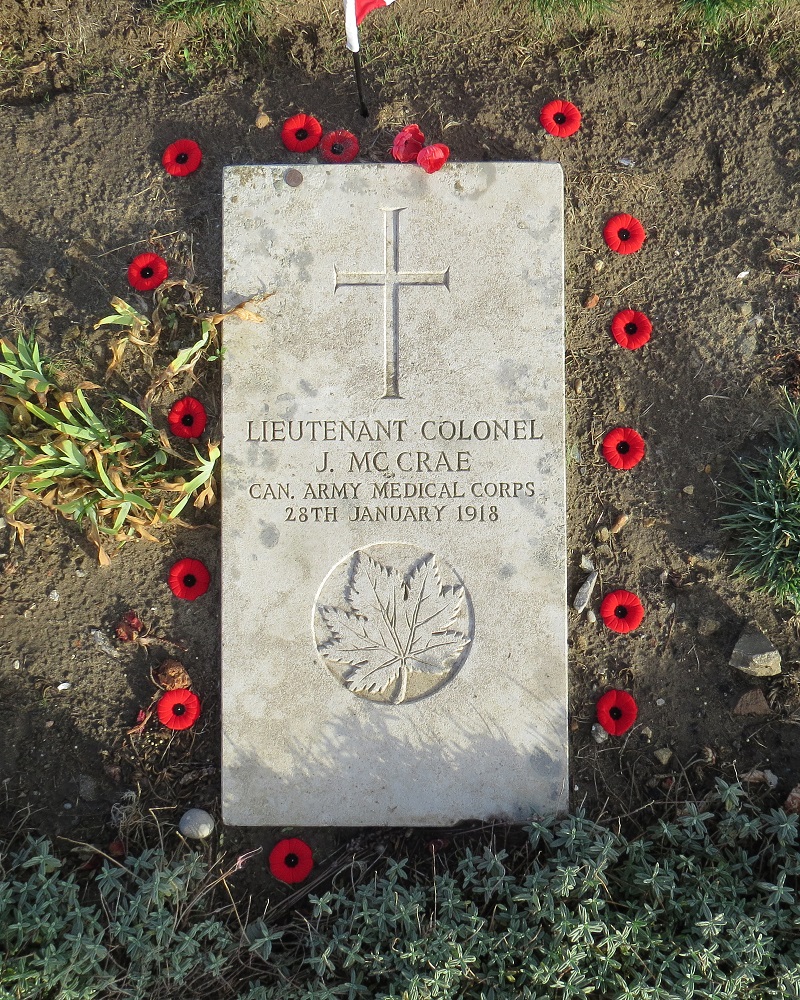Location
Wimereux, Pas-de-Calais, lies five kilometres north of Boulogne. Firstly, from the centre of Boulogne, take the A16 to Calais, and exit at junction 33. Then, follow the D242 into Wimereux. Then, at the first roundabout in town, take the third exit. Finally, continue on the D242, and after about 200 yards, turn left into a one way road. The cemetery lies at the end of this road. The CWGC graves are to the rear, lower portion of the cemetery. Because of the sandy nature of the soil, the headstones are recumbent – they lay flat. Note the cemetery gate locked before 8:00 A.M.
History
Wimereux was the HQ of the Queen Mary’s Army Auxiliary Corps during the Great War. In 1919, it became the GHQ of the British Army. From October 1914 onward, Boulogne and Wimereux formed an important hospital centre. The Two Madonnas of Perveyse, Mairi Chisholm and Elsie Knocker, had brought wounded soldiers here during the Great War.
Until June 1918, medical units at Wimereux used the cemetery for burials. The south-eastern half having been set aside for CWGC graves. Although, a few burials also made among the civilian graves. By June 1918, this half of the cemetery was filled. Later, burials from the local hospitals were made in the new military cemetery, at Terlincthun.
The British Rear HQ moved from Boulogne to Wimereux, for a few days in May 1940. This was prior to the evacuation of the B.E.F. from Dunkirk. Thereafter, Wimereux was in German hands. The German Naval HQ situated on the northern side of the town. After D-Day, as Allied forces moved northwards. The town shelled from Cap Griz-Nez. Finally, Wimereux was re-taken by the Canadian 1st Army, on 22 September 1944.

The cemetery contains 2,847 Commonwealth burials of the Great War. However, only two unidentified. Buried among them is Lt.-Col. John McCrae. Dr. McCrae wrote the poem In Flanders Fields. There are also five French, and a plot of 170 German war graves. Also, the cemetery contains 14 Second World War burials. Six of these unidentified. The Commonwealth section designed by Charles Holden.
Wimereux Communal Cemetery Graves
Lieutenant-Colonels
Including Lt.-Col. John McCrae, four Lieutenant Colonels buried at Wimereux. Firstly, Lieutenant-Colonel Henry Moore, D.S.O., M.C., 3 Times Mentioned in Dispatches. He was a visiting Surgeon, of Royal City of Dublin Hospital and Westmoreland Lock Hospital. Secondly, Lieutenant-Colonel Roger Orme Kerrison. He served with Australia’s Reserve Cavalry Regiment. And finally, Lieutenant-Colonel James Froude Flashman, who served in the Australian Army Medical Corps.

Nurses
There are two nurses at Wimereux, including one Bluebird. Firstly, Nursing Sister Anna Elizabeth Whitely. She served with No.10 Canadian Stationary Hospital, Canadian Army Medical Corps. Anna lies buried not far from John McCrae. Secondly, Nurse Alice Hilda Lancaster. Similarly, she served with the Territorial Force Nursing Service.

There are also women from the British Red Cross Society, and the Voluntary Aid Detachment buried at Wimereux.

Royal Flying Corps
Seven Air Mechanics, and Pilots of the RFC, buried here. Lieutenant George William Annakin Watson, 1st Aircraft Supply Depot, RFC, died 7 March 1918. This was during the Final German Offensive.
Captains
Twenty-four Captains, buried here. Including six, decorated, or Mentioned in Dispatches. The Military Cross awarded to three of these Captains. Firstly, Captain Armar Lowry-Corry Wintle, 9th Bn., Royal Inniskilling Fusiliers. Secondly, Captain Victor Baillie Hill, 6th Bn., King’s Royal Rifle Corps. And lastly, Captain Martin Bowen, 1st/1st Bucks Bn., Oxford and Bucks Light Infantry.
German Graves
Of 170 German graves, four Known Only to God. Little, in fact, known of these casualties. For instance, no awards recognized, nor is the date of their birth known. Most, being mortally wounded, had no means of telling their story.

Royal Newfoundland Regiment
Private William Devoe (Regimental Number 3443) lies buried in Plot VIII, Row D, Grave 8. Private Devoe reported as having died of sickness in No.14 Stationary Hospital, at Wimereux. He died of tuberculosis, and peritonitis, on 17 March 1918.
More
This is the first CEFRG blog of a Great War cemetery. Four hundred videos of CWGC Great War cemeteries published. Another thirty-five videos, of much larger Volksbund Great War Cemeteries, are also on YouTube. Deutscher Soldatenfriedhof Montmedy is a rare example of a Volksbund cemetery containing CWGC graves.
More
Please subscribe to CEFRG to be notified by email when there are new posts. Subscription is free, and your email kept confidential.
